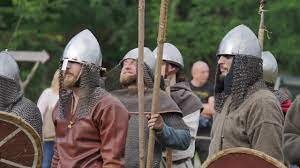Behind the Scenes - Larping
/Surprisingly, I do a lot of research for my mysteries (even though the books are fiction). For The Tulip Shirt Murders, my sassy PI, Delanie Fitzgerald, needs to interview a twenty-something who was accused of stalking. In their conversations, she learns he larps (live action role playing).
According to C. Don Wilson in the Urban Dictionary, This is a “form of role-playing game where the participants physically act out their characters' actions. The players pursue their characters' goals within a fictional setting represented by the real world, while interacting with one another in character.”
Originating in the 1970s, the activity gained popularity in the 1980s. According to Wilson, “The fictional genres used vary greatly, from realistic modern or historical settings to fantastic or futuristic eras. Production values are sometimes minimal, but can involve elaborate venues and costumes. LARPs range in size from small private events lasting a few hours to huge public events with thousands of players lasting for several days.”
According to the World of Geek, larping differs from cosplay in that larping involves action and reenactments. “Cosplay, from the words ‘Costume’ and ‘Play,’ is about costuming and re-creating the design of already existing/original characters.” (World of Geek). Cosplay usually involves less role-playing and action events like battles.
Larping often has rules, and participants “immerse themselves entirely in their character and act out their actions” (World of Geek).
In my story, the suspect, Douglas Black, invites Delanie to an event in a local park where his group or guild reenact Medieval life, including battles between warring factions. He tries to convince her to join him by offering to lend her a replica sword.
Popular culture is a large part of the Delanie Fitzgerald series. In her investigations, she meets all kinds of interesting people with unique jobs and hobbies, and it’s a fun way for me to learn about new things.
Check out the adventures of Delanie, Duncan, Margaret, and Chaz in The Tulip Shirt Murders.















